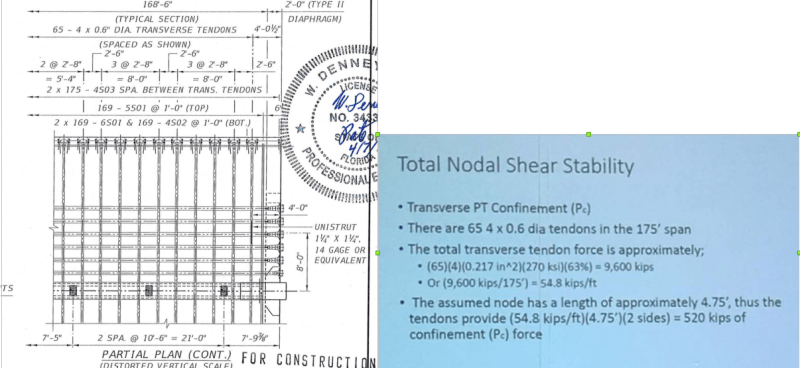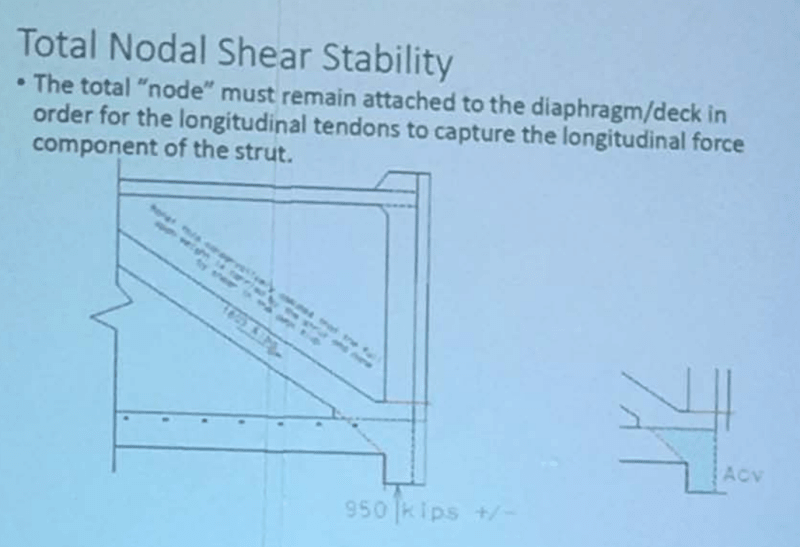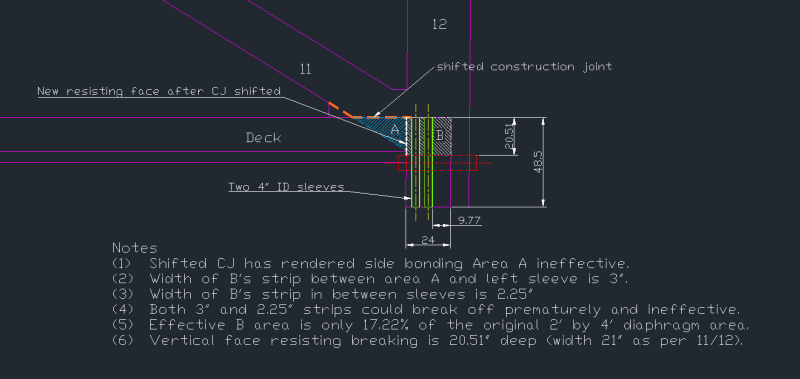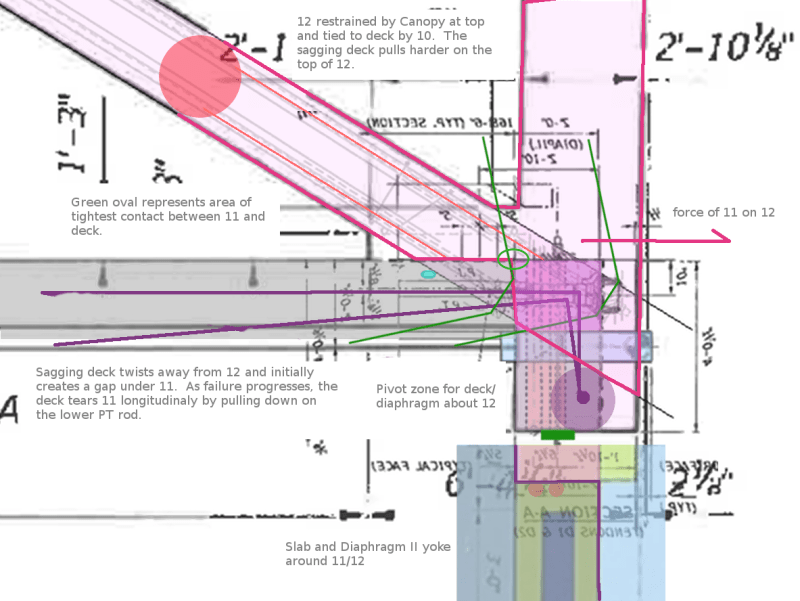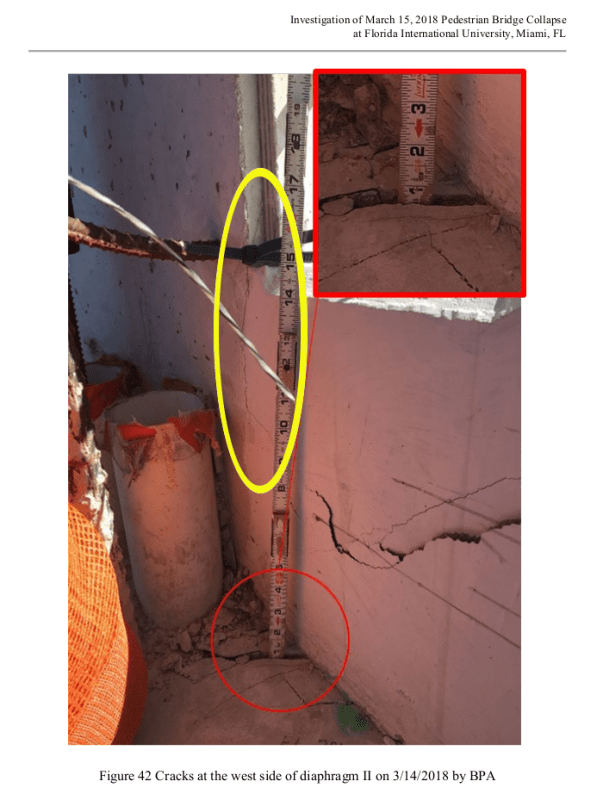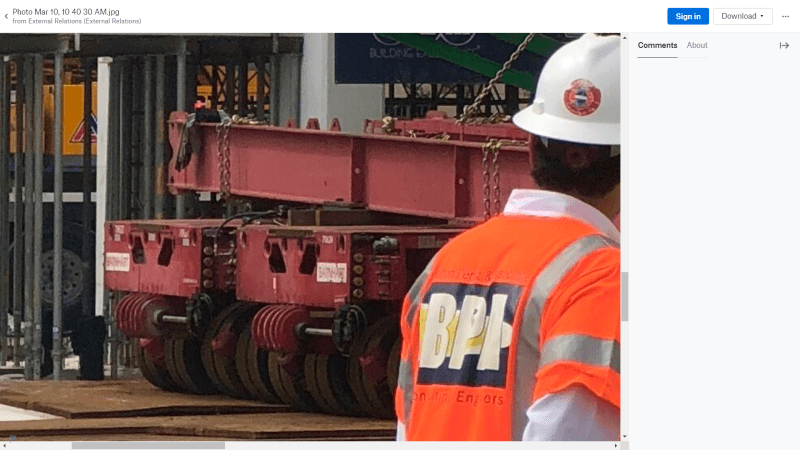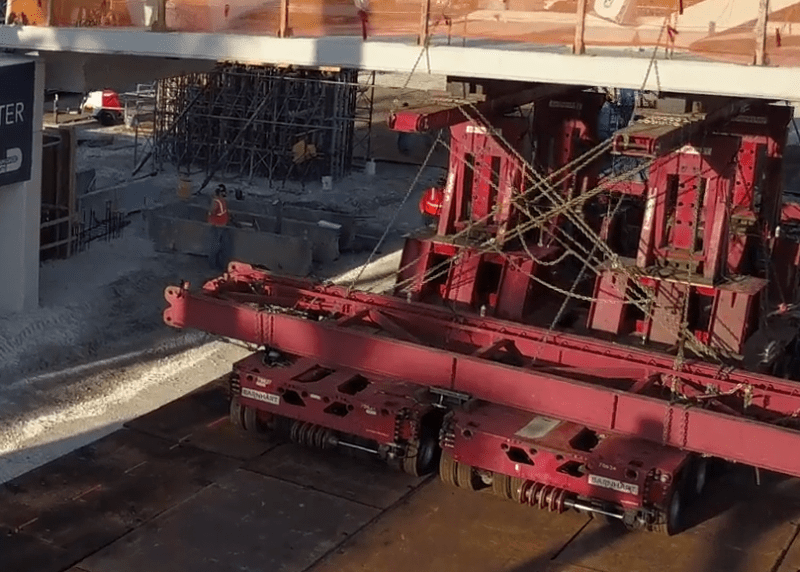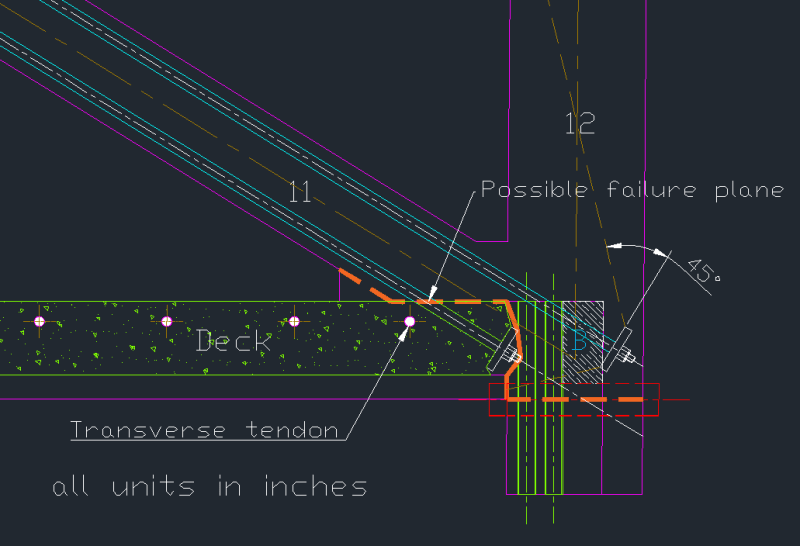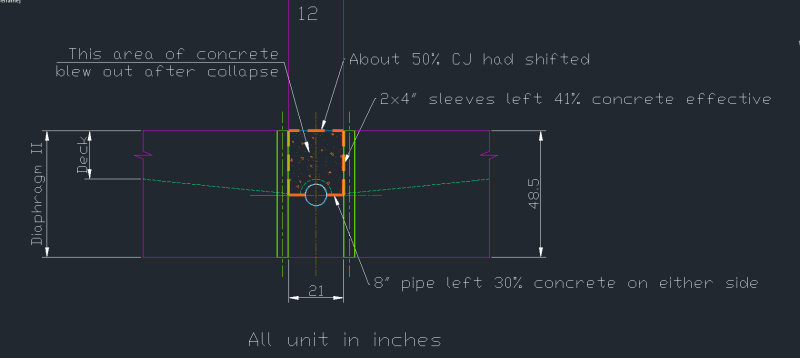After a quick scan of the FIU information outlined by
MikeW7 I found some flaws in the Mar 15, 2018 Presentation
(1) Confining force by averaging the lateral tendons not justified.
The 11/12 area did not have any transverse tendons at all and the next nearest one was 4.04’ away from the Diaphragm II or 4.915’ from the Member 12. In the presentation 11/12 was assumed 4.75’ long to have transverse confinement based on a total force from 65 tendons divided by the 175’ length.
(2) Altered failure mode by the shifted construction joint (CJ) not appreciated and reductions in strength caused by the presence of the five cast-in sleeves and pipe were omitted in the presentation.
In the presentation it was assumed the rebar crossing in area the Member 12 bonding with the deck (including Diaphragm II) would participate in resisting shear. This area shown in the presentation is a triangular area (from the deck) plus a full cross section of 2’ wide by 4’ deep from Diaphragm II.
In the field the construction joint had shifted. Therefore 11/12 shear capacity based on the above assumption is no longer justified and the reason is explained in a sketch I prepared below (unit in inches).
It is obvious once the CJ had shifted the bonding area A on the two sides of 11/12 would cease to resist shear against 11/12 but stayed as integral parts of the deck. The resistance then would be transferred to the vertical face between the deck (Area A) and Member 12 (Area B).
The presentation had assumed the full cross section of Diaphragm II, on both sides of Member 12, would be available to resist shear. However by placing two vertical 4” ID sleeves on each side and one horizontal 8” ID pipe this bonding surface B was compromised leaving a mere 17.22% area effective.
The designer in the presentation did ignore the concrete contribution to resist shear and relied heavily on the rebar crossing the bonding areas he had assumed. In the field the 11/12 slid along the CJ, pulled out the vertical face between Area A and B and managed to shear out of position along the 8” horizontal pipe. This is because along the 8” pipe the concrete area is at its minmum while at the same time the rebar are embedded with the least amount of concrete due to the sheer volume taken up by the 8” pipe. The lack of concrete surrounding the rebar, at the failure plane, has eventually led to many steel bars seemingly clean and undamaged without any concrete fragment attached after the collapse.
In summary the failure mode brought about by the shifted CJ was not appreciated. The significant capacity reductions in the 11/12/deck joint, caused by embedding four vertical 4” sleeves and one horizontal 8” pipe at the critical positions, were not considered. These shortcomings led to the bridge failed materially different to the Mar 15,2018 presentation. Therefore the assurance of the bridge was safe on Mar 15, 2018 was based on some serious flaws.
It would be fair to say the designer did not have the time to go over the cracks photos as we did and so his presentation could not have the refinements I have introduced. However the presentation was crucial to persuade every attendee to the Mar 15, 2018 meeting that the bridge was safe. Therefore any flaw that concealed the true condition and led to an inaccurate assessment of the bridge safety should have been responsibly avoided.
